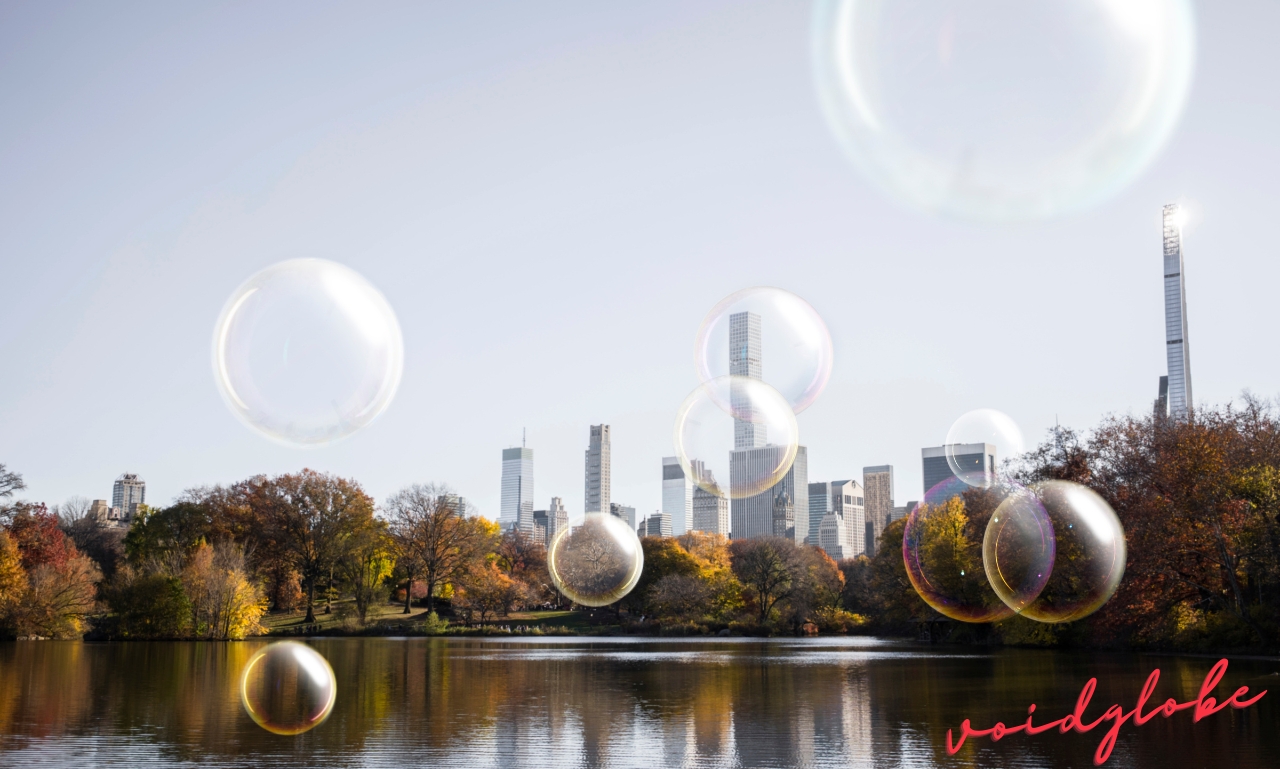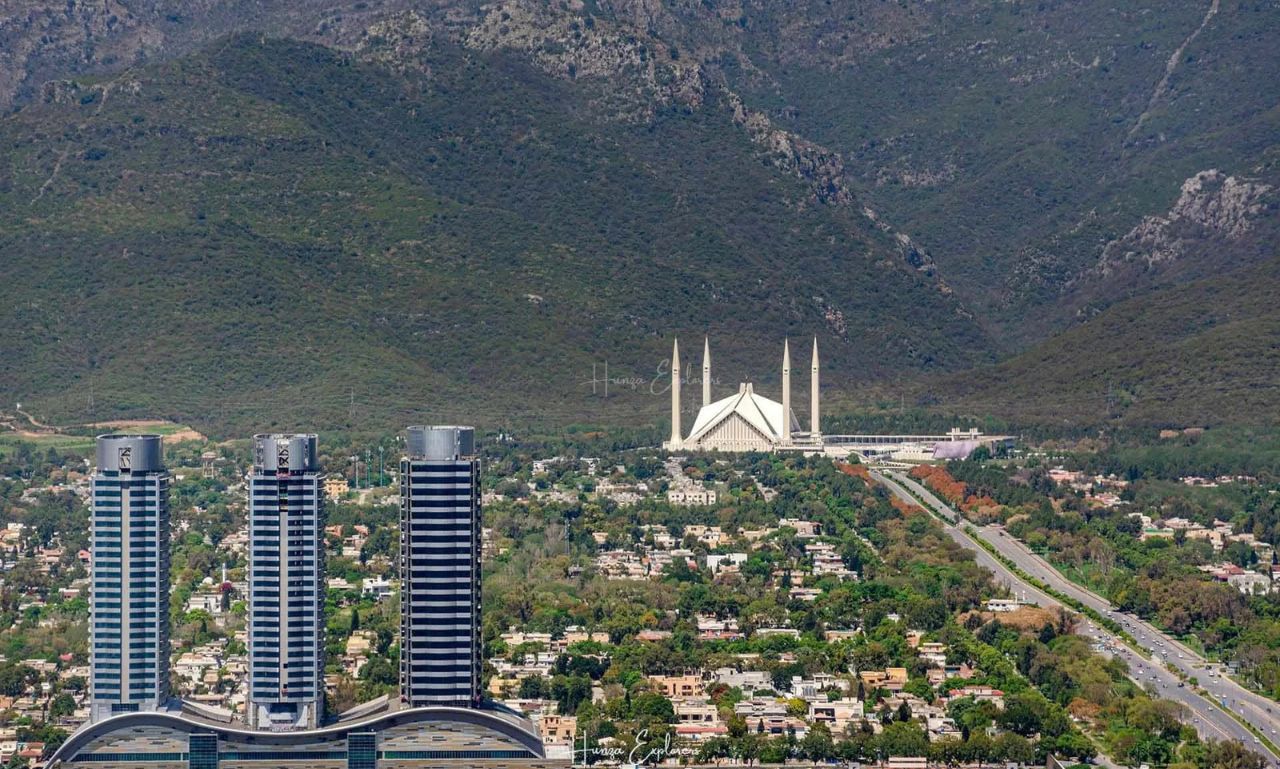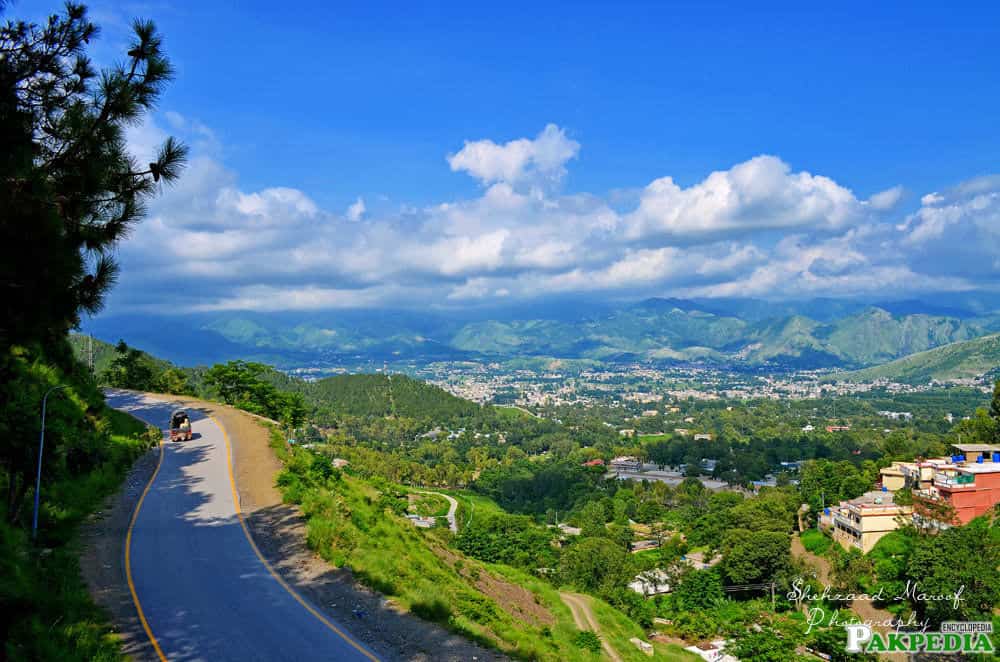Travel
Why Bubble Town Should Be Your Next Travel Destination
Published
8 months agoon

Bubble Town is a hidden gem waiting to be discovered by travelers seeking a unique and unforgettable destination. Nestled between rolling hills and glistening waters, this charming town offers a delightful blend of history, attractions, and experiences that will captivate your senses from the moment you arrive. Get ready to immerse yourself in the magic of Bubble Town, where every street corner holds a story, every dish tells a tale, and every smile welcomes you home. Pack your bags and prepare for an adventure like no other in Bubble Town!
The Fascinating History of Bubble Town
Nestled in the heart of Bubble Valley, Bubble Town has a history as vibrant and colorful as its name suggests. Originally founded by a group of bubble enthusiasts in the early 1900s. This charming town quickly became known for its innovative bubble-making techniques.
Legend has it that Bubble Town’s founders were inspired by the whimsical beauty of soap bubbles floating through the air on a sunny afternoon. Determined to capture this magic, they set out to create their own unique blend of bubble solution using secret ingredients passed down through generations.
As word spread about the mesmerizing bubbles being produced in Bubble Town,. Visitors from far and wide flocked to experience the enchanting sight for themselves. The town soon became a hub for artists, scientists, and dreamers alike, all drawn to the endless possibilities that bubbles represented.
Top Attractions in Bubble-Town
Bubble Town is a hidden gem that boasts an array of top attractions sure to captivate visitors of all ages. The Bubble Museum, a quirky institution dedicated to the history and artistry of bubbles, offers a fascinating look into the world of bubble-making. Visitors can marvel at intricate bubble sculptures and even try their hand at creating their own masterpieces.
For those seeking outdoor adventures, Bubble Park is a must-visit destination. This sprawling green space features bubbling springs, walking trails lined with colorful bubbles, and picnicking areas perfect for soaking in the bubbly ambiance. Don’t miss out on the Bubble Tower, which offers panoramic views of the entire town from its dizzying heights.
If you’re looking for a touch of whimsy, be sure to visit Bubble Street – a charming thoroughfare lined with quaint shops selling everything from bubble-themed souvenirs to handmade bubble wands. It’s the perfect place to stroll and immerse yourself in Bubble-Town’s unique charm.
Unique Experiences in Bubble Town
- Step into an enchanting world of unique experiences in Bubble Town that will leave you spellbound. Start your day with a hot-air balloon ride over the town, offering breathtaking views of colorful bubbles floating below.
- Explore the Bubble Museum, where you can learn about the history and artistry behind bubble-making. Participate in interactive exhibits, and even create your own customized bubble to take home as a souvenir.
- For thrill-seekers, embark on a bubble safari adventure through lush forests and bubbling streams. Encounter exotic wildlife like rainbow-colored bubble butterflies and shimmering dragonflies.
- Indulge in a relaxing spa session at the Bubble Spa, where therapists use special bubble-infused treatments for ultimate relaxation. Unwind in bubbly baths or enjoy a massage with aromatic bubble oils.
- End your day by attending a mesmerizing bubble light show at the town square, where artists showcase stunning displays of synchronized lights dancing within giant bubbles against the night sky.
Where to Stay in Bubble
When it comes to finding the perfect place to stay in Bubble, you are spoiled for choice. With a variety of accommodations that cater to every preference and budget.
From cozy bed and breakfasts nestled in charming neighborhoods to luxurious hotels offering breathtaking views of the town,. There is something for everyone. If you prefer a more immersive experience, consider booking a stay at one of the quaint guesthouses or boutique hotels that exude local charm.
For those seeking ultimate relaxation, Bubble-Town also boasts serene spa resorts where you can unwind and rejuvenate after a day of exploring. And if you’re an adventure seeker, why not opt for unique accommodations like treehouses or cabins for a truly unforgettable stay?
No matter where you choose to rest your head in Bubble-Town, one thing is certain: – hospitality here is top-notch and ensures your visit will be nothing short of memorable.
Delicious Food and Drinks in Bubble-Town
Indulge in a culinary adventure in Bubble Town, where every bite and sip is a delight for your taste buds. From quaint cafes to bustling food markets, this charming town offers a diverse range of delicious food and drinks that will leave you craving more.
Start your day with freshly brewed coffee from the local roastery or savor a flaky pastry at one of the cozy bakeries lining the streets. For lunch, head to the vibrant food trucks serving up mouthwatering street food dishes bursting with flavor.
In the evening, immerse yourself in Bubble-Town’s lively dining scene by trying out traditional dishes at family-owned restaurants or exploring trendy eateries offering fusion cuisine. Don’t forget to sample some locally crafted beers or signature cocktails made with ingredients sourced from nearby farms.
Whether you’re a foodie looking for new culinary experiences or simply seeking comfort in familiar flavors,. Bubble Town has something to satisfy every palate. Get ready to embark on a gastronomic journey like no other during your visit to this picturesque destination.
Tips for Traveling to Bubble-Town
When traveling to Bubble Town, make sure to pack comfortable walking shoes, as the town is best explored on foot. The cobblestone streets and charming alleyways are perfect for leisurely strolls.
Don’t forget to bring a camera along to capture the picturesque architecture and vibrant street art that Bubble-Town is known for. You’ll want to document every colorful corner you come across.
Take some time to interact with the locals; they’re friendly and always eager to share stories about their beloved town. Engaging with them will give you a deeper appreciation for Bubble-Town’s rich culture and community spirit.
Try out the local cuisine at small cafes and eateries tucked away in hidden corners. From traditional dishes to modern fusion creations, Bubble Town offers a culinary experience like no other.
Why Bubble is the Perfect Destination for Everyone
Nestled in the heart of the countryside,. Bubble Town offers a perfect blend of relaxation and adventure for travelers of all ages. Whether you’re a nature enthusiast, a history buff, or a foodie at heart, this charming town has something special to offer everyone.
For those seeking outdoor thrills, Bubble boasts picturesque hiking trails through lush forests and serene lakeside picnics. The town’s rich history is sure to captivate curious minds with its well-preserved historical sites and engaging storytelling tours.
Food lovers will delight in Bubble Town’s culinary scene, featuring farm-to-table restaurants serving up delicious food. Local fare and cozy cafes are perfect for savoring artisanal coffees. And after a day of exploration, unwind at one of the town’s quaint bed-and-breakfasts or boutique hotels for a restful night’s sleep.
From family vacations to solo getaways,. The town truly has it all, making it the ideal destination for everyone looking to create lasting memories in a vibrant and welcoming setting.
Conclusion
In the bustling streets of Bubble Town, every corner holds a new adventure waiting to be discovered. The rich history, vibrant attractions, and delicious cuisine make it a must-visit destination for all travelers seeking something extraordinary.
From exploring the fascinating history of the town to indulging in unique experiences that you won’t find anywhere else,. This charming town has something for everyone. Whether you’re a history buff, an adrenaline junkie, or a food enthusiast,. Bubble-Town promises to captivate your senses and leave you wanting more.
With cozy accommodations that cater to every budget and palate-pleasing dishes that will tantalize your taste buds,. Town ensures a memorable stay from start to finish.
You may like
-


The Ultimate Gear Guide for Alpine Ice Hacking Enthusiasts
-


Exploring the Depths of Enigmatic λιβαισ: A Journey Beyond Time
-


Reflecting on the Past: A Comparison of 2023-1954
-


IntrepidFood.eu: Where Foodies Unite for Unique and Tasty Eats
-


5 Delicious Variations of Cassasse to Try Today
-


The Curious Case of Incidental 70: From Background Character to Pop Culture Icon
Travel
Tourism: A Gateway to Cultural Exchange and Economic Growth
Published
4 weeks agoon
October 23, 2024Tourism has long been a driving force behind economic growth and cultural exchange. The exploration of new places, understanding diverse cultures, and participating in leisure activities in unfamiliar environments are all essential components of tour-ism. As a key player in the global economy, tourism influences many sectors such as hospitality, transportation, and entertainment, while simultaneously promoting the cultural heritage of the host destinations. This article explores the importance of tourism, the various types of tourism, and the challenges facing this ever-growing industry.
The Importance of Tourism
Economic Impact
Tourism is one of the largest global industries, contributing significantly to the GDP of many countries. In 2019, the travel and tourism industry generated $9.2 trillion globally and supported 330 million jobs. Countries such as France, Spain, the United States, and Thailand are prime examples of destinations where tour-ism is a major economic contributor. The industry creates jobs across various sectors, from accommodation and transportation to food services and retail. Local businesses benefit greatly from tourist spending, creating a multiplier effect that stimulates the entire economy.
Moreover, tour-ism is a major source of foreign exchange, helping countries to diversify their income sources. For many developing nations, tourism serves as a critical engine for economic development, attracting international investments in infrastructure, services, and facilities. Governments often invest in airports, roads, and other forms of infrastructure to cater to tourists, which in turn benefits local communities.
Cultural Exchange and Preservation
Beyond its economic advantages, tour-ism fosters cultural exchange and understanding. Tourists, by exploring new cultures, traditions, and lifestyles, gain insights into ways of life that may be vastly different from their own. This interaction helps break down barriers, leading to more tolerance and acceptance among diverse communities. The cultural exchange inherent in tourism can also lead to the preservation and promotion of local heritage, arts, and traditions. For instance, many local festivals, craft markets, and traditional performances gain visibility through tourism, ensuring their survival in a rapidly modernizing world.
Environmental and Ecotourism
Tourism also plays a significant role in environmental conservation. With the rise of ecotourism, tourists are increasingly drawn to natural destinations such as national parks, rainforests, and marine reserves. Ecotourism promotes the idea that nature should be conserved and appreciated responsibly. Many ecotourism initiatives support conservation efforts, provide jobs for local communities, and educate travelers about the importance of protecting biodiversity. Popular ecotourism destinations include Costa Rica, Kenya, and New Zealand, where sustainable tourism practices are implemented to minimize environmental impacts.
Types of Tourism
Leisure Tourism
Leisure tour-ism remains the most popular form of travel. It includes activities such as beach holidays, cruises, city tours, and theme park visits. Whether travelers are looking for relaxation or adventure, leisure tourism offers a wide range of experiences catering to all tastes. Iconic destinations such as the beaches of Hawaii, the bustling streets of Paris, and the vibrant markets of Marrakech continue to attract millions of tourists each year.
Cultural Tourism
Cultural tour-ism is focused on experiencing the customs, history, art, and heritage of different destinations. Travelers seeking deeper connections with the places they visit often choose this type of tourism. For example, visiting ancient temples in Japan, exploring the ruins of Machu Picchu, or attending traditional ceremonies in India are all popular cultural tour-ism activities. This form of tourism promotes greater understanding and appreciation of different cultures, while also contributing to the preservation of cultural assets.
Adventure Tourism
For the thrill-seekers, adventure tourism provides excitement through activities such as hiking, rafting, scuba diving, and safaris. Adventure tourists are drawn to destinations that offer unique physical challenges and a close connection with nature. Countries like Nepal, known for trekking in the Himalayas, and Australia, famous for diving in the Great Barrier Reef, have become hotspots for adventure tour-ism. This sector often overlaps with ecotourism, as many of these activities occur in natural settings.
Medical Tourism
Medical tour-ism has emerged as a growing trend, where individuals travel to other countries to receive medical treatments or procedures. This type of tourism is often driven by the need for lower costs, better quality care, or treatments not available in one’s home country. Countries such as Thailand, India, and Mexico have become leading destinations for medical tourists due to their advanced healthcare systems and affordable prices. Medical touri-sm not only provides patients with necessary treatments but also boosts the economies of the host countries.
Business Tourism
Business tour-ism involves travel for work-related activities, such as attending conferences, meetings, or trade fairs. Although business travelers may not have much leisure time during their trips, many extend their stays to explore the destination once their professional commitments are complete. Cities such as London, New York, and Dubai are popular business tourism hubs, hosting major international events that attract thousands of professionals from around the world.
Challenges Facing Tourism
Overcrowding and Overtourism
Overtourism is one of the biggest challenges facing the tour-ism industry today. Popular tourist destinations often struggle with overcrowding, which can lead to the degradation of natural environments and cultural sites. Venice, Machu Picchu, and the Galápagos Islands are prime examples of destinations where the influx of tourists has put significant strain on local resources. In response, some governments have implemented restrictions on the number of visitors allowed, and others are promoting alternative, less-frequented destinations to distribute the flow of tourists more evenly.
Environmental Degradation
While tourism can promote environmental conservation, it can also contribute to its destruction. Large-scale tour-ism development projects, such as the construction of hotels, airports, and resorts, can lead to habitat loss, pollution, and the depletion of natural resources. Unsustainable tourism practices, such as littering, improper waste management, and overuse of water resources, can severely impact fragile ecosystems. Therefore, it is essential for both tourists and tourism operators to prioritize sustainability and adopt eco-friendly practices.
Impact on Local Communities
Tourism can sometimes disrupt local communities, particularly in cases where rapid development leads to displacement, cultural commodification, and economic inequality. In some regions, the growth of tour-ism has resulted in skyrocketing property prices, pushing out local residents in favor of luxury resorts and hotels. This can create resentment and tension between locals and tourists. To mitigate these effects, community-based tourism initiatives are being promoted, which encourage local ownership and control of tourism enterprises.
The Effects of Global Crises
Global crises such as pandemics, economic recessions, and political instability can have a significant impact on the tourism industry. The COVID-19 pandemic, for example, brought the global tour-ism industry to a standstill, with international arrivals declining by 74% in 2020. This unprecedented crisis led to massive job losses, business closures, and a sharp decline in travel demand. As the world recovers, the tour-ism industry must adapt to new realities, such as changing consumer preferences and stricter health and safety protocols.
Conclusion
Tourism is a dynamic and multifaceted industry that holds great potential for economic development, cultural exchange, and environmental conservation. While it offers numerous benefits to both tourists and host communities, it also presents challenges that need to be addressed through sustainable practices and responsible travel. By fostering a balance between economic growth, cultural preservation, and environmental stewardship, tourism can continue to thrive as a force for positive change in the world.

Introduction
Islamabad, the capital city of Pakistan, is known for its modern infrastructure, scenic beauty, and serene environment. Established in the 1960s, the city was designed to replace Karachi as the capital of Pakistan, and it represents the country’s vision of modernity and urban development. Islamabad stands out due to its organized layout, lush greenery, and its proximity to the Margalla Hills, making it one of the most picturesque capitals in the world.
History and Foundation
Islamabad’s foundation was laid in 1960 under the government of General Ayub Khan. The decision to move the capital from Karachi was driven by several factors, including the need for a central location, climate suitability, and the desire to move the capital away from the coast, reducing vulnerabilities to foreign invasion. Renowned Greek architect and town planner, Constantinos Apostolou Doxiadis, designed the city’s master plan.
Before its establishment, the area where Islamabad now stands was sparsely populated with small villages and ancient settlements. The site was selected near Rawalpindi, which served as the interim capital during the transition period.
Geography and Climate
Islamabad is located in the northern part of Pakistan, nestled against the foothills of the Margalla Hills, which are part of the Himalayan range. The city is spread over an area of 906 square kilometers and lies at an elevation of 507 meters (1,663 feet) above sea level. Its location provides residents with stunning views of the surrounding natural beauty.
Islamabad experiences a humid subtropical climate. The city enjoys four distinct seasons, with hot summers, mild winters, a rainy monsoon period, and a pleasant spring. The Margalla Hills significantly influence the weather, keeping the climate relatively cooler and more moderate compared to other cities in Pakistan, especially in summer.
City Layout and Architecture
Islamabad’s urban planning is renowned for its sector-based layout, ensuring well-organized residential, commercial, and governmental areas. The city is divided into eight main zones, including administrative, diplomatic, residential, commercial, educational, and rural areas, with sectors identified by letter and number combinations.
Each sector is self-sufficient, equipped with basic amenities such as markets, mosques, parks, and schools. Major commercial hubs include Blue Area, which runs parallel to the central sectors, and is home to offices, malls, and banks.
The architecture in Islamabad blends modernity with traditional Islamic styles. Some notable buildings include:
- Faisal Mosque: The largest mosque in Pakistan and an iconic symbol of the city, this mosque was designed by Turkish architect Vedat Dalokay. Its unique design combines modernist lines with traditional Islamic elements, creating a stunning structure that stands out against the backdrop of the Margalla Hills.
- Pakistan Monument: A symbol of the unity of the Pakistani people, this monument in Shakarparian Park represents the four provinces and three territories of Pakistan. It is shaped like a blooming flower, symbolizing the nation’s growth and unity.
Culture and Lifestyle
Islamabad is known for its calm and laid-back lifestyle. In contrast to the hustle and bustle of Pakistan’s larger cities like Karachi and Lahore, Islamabad offers a more serene environment. The city is often referred to as “the green city” due to its vast expanses of parks, forests, and tree-lined streets. Popular parks include Fatima Jinnah Park, Daman-e-Koh, and the Rawal Lake Park.
Being the capital city, Islamabad is home to a diverse population that includes diplomats, expatriates, and people from various regions of Pakistan. This diversity is reflected in the city’s culture, food, and festivals. While traditional Pakistani cuisine is available everywhere, Islamabad also boasts a range of international restaurants and cafes.
Islamabad’s cultural scene includes art galleries, theaters, and music festivals. Lok Virsa Museum and Pakistan National Council of the Arts (PNCA) are key cultural institutions, promoting local arts and heritage. The city also hosts various cultural events like the Pakistan National Folk Festival and literature festivals.
Economy and Education
Islamabad is a significant economic hub in Pakistan, especially for government services and the information technology sector. Its economy is largely driven by the federal government, embassies, and multinational corporations. The city’s IT sector is growing rapidly, with the establishment of IT parks and companies such as PTCL, Mobilink, and other software firms.
Education is another highlight of Islamabad. It is home to some of the most prestigious educational institutions in Pakistan, including Quaid-e-Azam University, the National University of Sciences and Technology (NUST), and International Islamic University. The presence of high-quality schools, colleges, and universities attracts students from all over the country.
Tourism and Attractions
Islamabad is a gateway to some of Pakistan’s most beautiful northern areas, but the city itself has much to offer visitors:
- Daman-e-Koh: A scenic viewpoint located in the Margalla Hills, offering panoramic views of Islamabad, especially at sunset.
- Rawal Lake: A man-made lake that provides a peaceful retreat for picnics, boating, and bird-watching.
- Saidpur Village: A centuries-old village at the foot of the Margalla Hills, restored to showcase traditional architecture and culture, with restaurants and cultural exhibits.
- Shah Faisal Mosque: A must-visit for tourists due to its architectural beauty and cultural significance.
Additionally, Islamabad’s proximity to Murree, Nathia Gali, and other hill stations makes it an ideal base for tourists seeking both urban and natural experiences.
Challenges and Future Prospects
While Islamabad is one of the most well-planned cities in Pakistan, it still faces challenges. Urban sprawl, rapid population growth, and the pressure on infrastructure are concerns for city planners. However, efforts are ongoing to expand the city’s facilities while maintaining its green character.
In recent years, Islamabad has seen an increase in high-rise buildings and real estate development. As Pakistan’s IT sector grows, Islamabad is becoming a hub for startups and tech companies, leading to a more vibrant economic future for the city.
Conclusion
Islamabad represents the modern face of Pakistan, blending contemporary development with the country’s rich cultural heritage. It is a city that values both progress and nature, offering a peaceful yet dynamic lifestyle to its residents and visitors. As it continues to grow, Islamabad is poised to remain a key player in Pakistan’s political, economic, and cultural landscape.
Travel
Abbottabad: A Scenic City with a Rich Historical Legacy
Published
1 month agoon
October 22, 2024
Abbottabad, a picturesque city in the Hazara region of Pakistan’s Khyber Pakhtunkhwa province, stands out for its lush greenery, pleasant climate, and rich historical significance. Situated at an elevation of about 1,260 meters (4,140 feet), the city is surrounded by the scenic Sarban hills, drawing tourists and serving as a gateway to northern areas like Naran, Kaghan, and Gilgit-Baltistan.
Historical Background
In 1853, Major James Abbott, a British officer of the East India Company, founded Abbottabad. He established it as a military cantonment and played a key role in shaping its early development. Deeply moved by the beauty of the area, Major Abbott expressed his affection for the city in a heartfelt poem, lamenting his departure. Abbottabad quickly grew in prominence as a garrison town, largely due to its strategic location.
During British rule, Abbottabad became a center for military and administrative activities in the region. Even today, the city retains its historical military significance as it hosts the Pakistan Military Academy (PMA) in Kakul, where officers of the Pakistan Army are trained. This prestigious institution is a key part of the city’s identity.
Geography and Climate
Abbottabad enjoys a temperate climate with four distinct seasons. The summers are mild and pleasant, making it an ideal summer retreat for tourists escaping the heat of the plains. Winters can be cold, with occasional snowfall, transforming the city into a winter wonderland. The city’s moderate climate and its verdant surroundings contribute to its reputation as a “city of pines” due to the abundance of pine trees in and around the area.
Abbottabad’s geographical location is a major factor in its appeal. Situated along the Karakoram Highway, the city serves as a gateway to the northern areas of Pakistan, including the stunning landscapes of the Kaghan Valley, the Karakoram mountain range, and even the challenging trek routes leading to K2, the second-highest mountain in the world. As a result, it is often used as a base by adventure enthusiasts and tourists heading to these areas.
Education and Development
Abbottabad has also established itself as an educational hub. Apart from the Pakistan Military Academy, the city is home to several prestigious educational institutions, including the Ayub Medical College, COMSATS University, and the Army Burn Hall College, which cater to students from all over Pakistan.
The city’s infrastructure has developed significantly over the past few decades. While it still maintains its old-world charm with colonial-era bungalows and tree-lined streets, modern developments, including shopping malls, restaurants, and hotels, have sprung up, making it a blend of the old and new.
Tourism and Attractions
Tourism is a vital part of Abbottabad’s economy. Its natural beauty, cool climate, and historical significance attract both domestic and international visitors. Some of the popular tourist destinations in and around Abbottabad include:
- Shimla Hill: A scenic hilltop offering panoramic views of the city and its surroundings. It is a popular spot for hiking and picnics.
- Ilyasi Masjid: A historical mosque built over a natural spring. The mosque is known for its architectural beauty and the adjacent water reservoir, where visitors often enjoy a swim.
- Thandiani: Located around 31 kilometers from Abbottabad, Thandiani is a small hill station offering breathtaking views of the surrounding mountains and valleys. It is particularly popular during the summer months.
- Harnoi: A serene valley near Abbottabad, famous for its freshwater streams, picnic spots, and lush greenery.
- Ayubia National Park: Located near the city, this park is home to various wildlife species. Offers trekking paths like the famous “Pipeline Track,” providing scenic views of the forested hills.
Abbottabad’s Role in Recent History
In recent times, Abbottabad came into the international spotlight in May 2011 when Osama bin Laden. The leader of the terrorist organization Al-Qaeda was found and killed in a secret U.S. Navy SEAL operation in the city. The operation took place in a compound located near the Pakistan Military Academy in Kakul. This incident drew significant global media attention to Abbottabad. However, it has since returned to its quieter and more peaceful existence.
Conclusion
Abbottabad is a city of contrasts—a blend of colonial history and modern development. Serene tourist destination, and a center of military training. Its pleasant weather, scenic landscapes, and historical charm make it a unique city in Pakistan. Drawing visitors who seek natural beauty, history, and adventure. Whether it’s a leisurely stroll through its tree-lined streets or an adventurous trek. Through the nearby mountains, Abbottabad offers something for everyone.


Exploring the World of Zoos: Their Role, History, and Ethical Considerations

Sunflowers: The Radiant Wonders of the Natural World

The Role and Evolution of Pharmacies in Modern Healthcare

How Water Contamination Incidents Can Lead to Widespread Health Crises

Unlocking the Potential of Potassium Humate Fertilizer: Finding the Right Supplier

Reflecting on the Past: A Comparison of 2023-1954
Trending
-

 Health7 months ago
Health7 months agoHow Water Contamination Incidents Can Lead to Widespread Health Crises
-

 Business7 months ago
Business7 months agoUnlocking the Potential of Potassium Humate Fertilizer: Finding the Right Supplier
-

 Culture8 months ago
Culture8 months agoReflecting on the Past: A Comparison of 2023-1954
-

 entertainment8 months ago
entertainment8 months agoJudith Ivey – An Actress with Depth and Versatility
-

 entertainment8 months ago
entertainment8 months agoMadeline Wise: A Breakout Talent in Hollywood
-

 entertainment8 months ago
entertainment8 months agoThe Enchantment of Niles Garden Circus: An Insider’s Perspective
-

 Tech8 months ago
Tech8 months agoDizipal 608: A Comprehensive Guide to the Professional Document Scanner
-

 Other9 months ago
Other9 months agoCBD UK
